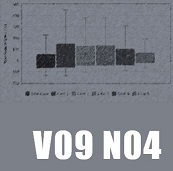Abstract
In semi-transparent photovoltaic (STPV) systems, the heat accumulated in the back of the panels can be transmitted to the thermal zone and contribute to the heating effects. It can even cause an increase in the temperature of the photovoltaic (PV) cell, which reduces the efficiency of the system. This article aims to develop, through EnergyPlus software, a modeling method of the thermal properties of an STPV system, to evaluate the influence of the heat generated by the PV system in the internal temperature of the simulated environment and in the efficiency of the PV system itself. The method included computational simulations, in which we proposed STPV systems combined with different window configurations: single and double glazing, different thicknesses for the air gap, and high-performance glass. Shading devices play the role of the PV material to retrieve its thermal properties. The simulations showed that the STPV materials influence the thermal conditions of the zone, due to the increase in the mean air temperature (3.3°C) and the increase in the surface temperature of the windows (17.4°C). The differences among the window models were more significant in the thermal issues than in the variations of the PV system efficiency. The results confirm that the most used case in the literature presented the best performance, what strengthens the reliability of the proposed method.
References
ABNT - ASSOCIAÇÃO BRASILEIRA DE NORMAS TÉCNICAS. NBR 15220-2: Desempenho térmico de edificações – Parte 2: Métodos de cálculo da transmitância térmica, da capacidade térmica, do atraso térmico e do fator solar de elementos e componentes de edificações. Rio de Janeiro, 2005.
ASTM - AMERICAN SOCIETY FOR TESTING AND MATERIALS. ASTM E-1036: Standard Methods of Testing Electrical Performance of Nonconcentrator Terrestrial Photovoltaic Modules and Arrays Using Reference Cells. USA, 1985.
DIDONÉ, E. L.; WAGNER, A. Semi-transparent PV windows: A study for office buildings in Brazil. Energy and Buildings, v. 67, n. 3, p. 136-142, Dec. 2013. DOI:https://doi.org/10.1016/j.enbuild.2013.08.002
ELSAYED, M. S. Optimizing thermal performance of building-integrated photovoltaics for upgrading informal urbanization. Energy and Buildings, v. 116, p. 232-248, Jan. 2016. DOI:https://doi.org/10.1016/j.enbuild.2016.01.004
ENERGYPLUS. EnergyPlus Documentation. Version 8.4. U. S. Department of Energy, Jan. 2016. Available in: https://energyplus.net/. Accessed: Sep. 19, 2017.
ENERGYPLUS. Engineering Reference Manual. Versão 8.4. Ernest Orlando Lawrence Berkeley National Laboratory; 2016a.
ENERGYPLUS. Input Output Reference Manual. Versão 8.4. Ernest Orlando Lawrence Berkeley National Laboratory; 2016b.
ISO - International Standardization Organization. ISO 15099: 2003. Thermal performance of windows, doors, and shading devices – Detailed calculations. International Standards Organization, Nov. 2003.
JONES, A. D.; UNDERWOOD, C.P. A thermal model for photovoltaic systems. Solar Energy, v. 70, p. 349-359, 2001. DOI:https://doi.org/10.1016/S0038-092X(00)00149-3
KANT, K.; SHUKLA, A.; SHARMA, A.; BIWOLE, P. H. Thermal response of poly-crystalline silicon photovoltaic panels: Numerical simulation and experimental study. Solar Energy, v. 134, p. 147-155, Sep. 2016. DOI:https://doi.org/10.1016/j.solener.2016.05.002
PENG, C.; YANG, J. The effect of photovoltaic panels on the rooftop temperature in the EnergyPlus simulation environment. International Journal of Photoenergy, v. 2016, Jan. 2016. DOI:https://doi.org/10.1155/2016/9020567
PVSYST. Pvsyst Software Photovoltaic. 2017. Available in: http://www.pvsyst.com/en/. Accessed: Aug. 15, 2017.
RODRIGUES, T. T.; CARLO, J. C. Simulação Térmica de Sistemas BIPV por meio do EnergyPlus. In: ENCONTRO NACIONAL DE CONFORTO NO AMBIENTE CONSTRUÍDO, 14. Camboriú, 2017. Anais... Camboriú: ANTAC, 2017. p. 808-817.
RORIZ, M. Correções nas Irradiâncias e Iluminâncias dos Arquivos EPW da Base Antac. 2012. Available in: http://www.labeee.ufsc.br/sites/default/files/arquivos_climaticos/correcao_epw_antac.pdf. Accessed: May 15, 2017.
SUWAPAET, N.; BOONLA, P. The Investigation of Produced Power Output During High Operating Temperature Occurrences of Monocrystalline and Amorphous Photovoltaic Modules. Energy Procedia, v. 52, p. 459-465, Jul. 2014. DOI:https://doi.org/10.1016/j.egypro.2014.07.098
TIWARI, G. N.; MISHRA, R. K.; SOLANKI, S. C. Photovoltaic modules and their applications: A review on thermal modelling. Applied Energy, v. 88, p. 2287-2304, Feb. 2011. DOI:https://doi.org/10.1016/j.apenergy.2011.01.005
VUONG, E.; KAMEL, R. S.; FUNG, A. S. Modelling and Simulation of BIPV/T in EnergyPlus and TRNSYS. Energy Procedia, v. 78, p. 1883-1888, Nov. 2015. DOI:https://doi.org/10.1016/j.egypro.2015.11.354
WONG, W. P.; SHIMODA, Y.; NONAKA, M.; INOUE, M.; MIZUNO, M. Field Study and Modeling of Semi-transparent PV in Power, Thermal and Optical Aspects. Journal of Asian Architecture and Building Engineering, v. 4, p. 549-556, Nov. 2005.
WONG, W. P.; SHIMODA, Y.; NONAKA, M.; INOUE, M.; MIZUNO, M. Semi-transparent PV: Thermal performance, power generation, daylight modelling and energy saving potential in a residential application. Renewable Energy, v. 33, p. 1024-1036, May. 2008. DOI:https://doi.org/10.1016/j.renene.2007.06.016
I accept that PARC Research in Architecture and Building Construction journal perform, on the original file approved for publication, revisions and modifications in orthoghaphic, grammar and standard issues.
I give to PARC Research in Architecture and Building Construction journal the rights of first publication of the revised version of my paper, licensed under the 'Creative Commons Attribution' license (which allows sharing the work with the recognition of first authorship and publication in this journal).


